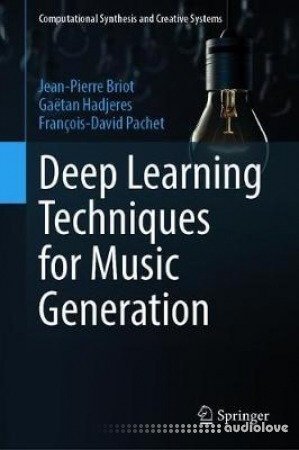Deep Learning Techniques for Music Generation

English | ISBN: 3319701622 | 2019 | 284 pages | PDF | 10 MB
This book is a survey and analysis of how deep learning can be used to generate musical content. The authors offer a comprehensive presentation of the foundations of deep learning techniques for music generation. They also develop a conceptual framework used to classify and analyze various types of architecture, encoding models, generation strategies, and ways to control the generation. The five dimensions of this framework are: objective (the kind of musical content to be generated, e.g., melody, accompaniment); representation (the musical elements to be considered and how to encode them, e.g., chord, silence, piano roll, one-hot encoding); architecture (the structure organizing neurons, their connexions, and the flow of their activations, e.g., feedforward, recurrent, variational autoencoder); challenge (the desired properties and issues, e.g., variability, incrementality, adaptability); and strategy (the way to model and control the process of generation, e.g., single-step feedforward, iterative feedforward, decoder feedforward, sampling). To illustrate the possible design decisions and to allow comparison and correlation analysis they analyze and classify more than 40 systems, and they discuss important open challenges such as interactivity, originality, and structure.
The authors have extensive knowledge and experience in all related research, technical, performance, and business aspects. The book is suitable for students, practitioners, and researchers in the artificial intelligence, machine learning, and music creation domains. The reader does not require any prior knowledge about artificial neural networks, deep learning, or computer music. The text is fully supported with a comprehensive table of acronyms, bibliography, glossary, and index, and supplementary material is available from the authors' website.
home page:
https://bit.ly/3edbRYw
DOWNLOAD
Related News:
 Computational Phonogram Archiving (Current Research in Systematic Musicology)
Computational Phonogram Archiving (Current Research in Systematic Musicology)2019 | ISBN: 3030026949 | English | 350 pages | PDF | 13 MB The future of music archiving and search engines lies in deep learning and big data. Music information retrieval algorithms automatically analyze musical features like timbre, melody, rhythm or musical form, and artificial intelligence then sorts and relates these features. At the first International Symposium on Computational...
 Sonic Writing Technologies of Material Symbolic and Signal Inscriptions
Sonic Writing Technologies of Material Symbolic and Signal InscriptionsEnglish | 2019 | ISBN: 150131386X | 305 Pages | PDF | 5 MB Sonic Writing explores how contemporary music technologies trace their ancestry to previous forms of instruments and media. Studying the domains of instrument design, musical notation, and sound recording under the rubrics of material, symbolic, and signal inscriptions of sound, the book describes how these historical techniques of sonic...
 Connectionist Representations of Tonal Music Discovering Musical Patterns by Interpreting Artifical Neural Networks
Connectionist Representations of Tonal Music Discovering Musical Patterns by Interpreting Artifical Neural NetworksEnglish | 2018 | ISBN: 1771992204 | 312 Pages | PDF | 1.46 MB Previously, artificial neural networks have been used to capture only the informal properties of music. However, cognitive scientist Michael Dawson found that by training artificial neural networks to make basic judgments concerning tonal music, such as identifying the tonic of a scale or the quality of a musical chord, the networks...
 Fundamentals of Music: Rudiments, Musicianship, and Composition (6th Edition)
Fundamentals of Music: Rudiments, Musicianship, and Composition (6th Edition)ISBN-13: 978-0205118335 | 150.32 MB Fundamentals of Music provides a clear and comprehensive approach to mastering the language of music. The authors invite students to create composition projects, develop aural skills through listening exercises, and analyze musical examples from various styles and genres....
Comments for Deep Learning Techniques for Music Generation:
No comments yet, add a comment!